TechRadar Verdict
For those who live life untethered, the Numen Air 5G is the smarter, sturdier way to stay connected - no SIM swaps, no compromises. However, it isn’t especially cheap, the data packages are expensive, and the lack of Wi-Fi 6 slightly undermines its support for 5G comms.
Pros
- +
CloudSIM is supported in 200+ countries
- +
support for up to 16 devices
- +
Uses global mobile comms
Cons
- -
Not rugged
- -
Uses Wi-Fi 5, not 6
- -
Expensive data plans
- -
Small screen
Why you can trust TechRadar
GlocalMe Numen Air: 30-second review
In a world where connectivity is currency, the GlocalMe Numen Air 5G positions itself as a sleek, travel-ready solution for professionals who need reliable internet wherever they go. This ultra-portable mobile hotspot combines global 5G coverage with a minimalist design, offering a compelling alternative to tethering or juggling local SIM cards. At just 194 grams and 0.56 inches thick, it is lighter than most smartphones and slips easily into a pocket or carry-on, making it ideal for digital nomads, frequent flyers, and remote workers.
The Numen Air’s standout feature is its CloudSIM technology, which automatically connects to the strongest available network in over 200 countries, eliminating the need for a physical SIM. For those who prefer manual control, a nano SIM slot adds flexibility. Dual-band Wi-Fi at 2.4 GHz and 5 GHz supports up to 16 devices simultaneously, making it suitable for solo travellers or small teams on the move.
Performance is backed by a 5400 milliamp-hour battery, delivering up to 15 hours of runtime on 4G and 11 hours on 5G. It also doubles as a power bank via USB-C, a thoughtful touch for users juggling multiple devices. The 2.4-inch touchscreen, while compact, provides quick access to signal strength, battery life, and data usage, wrapped in a clean and intuitive interface.
However, it is not without trade-offs. There is no rugged protection, no Wi Fi 6 support, and global data plans can become expensive for heavy users. Still, for those prioritising convenience, portability, and international coverage, the GlocalMe Numen Air 5G is a strong contender in the mobile hotspot space, especially for professionals who need to stay connected without compromise.
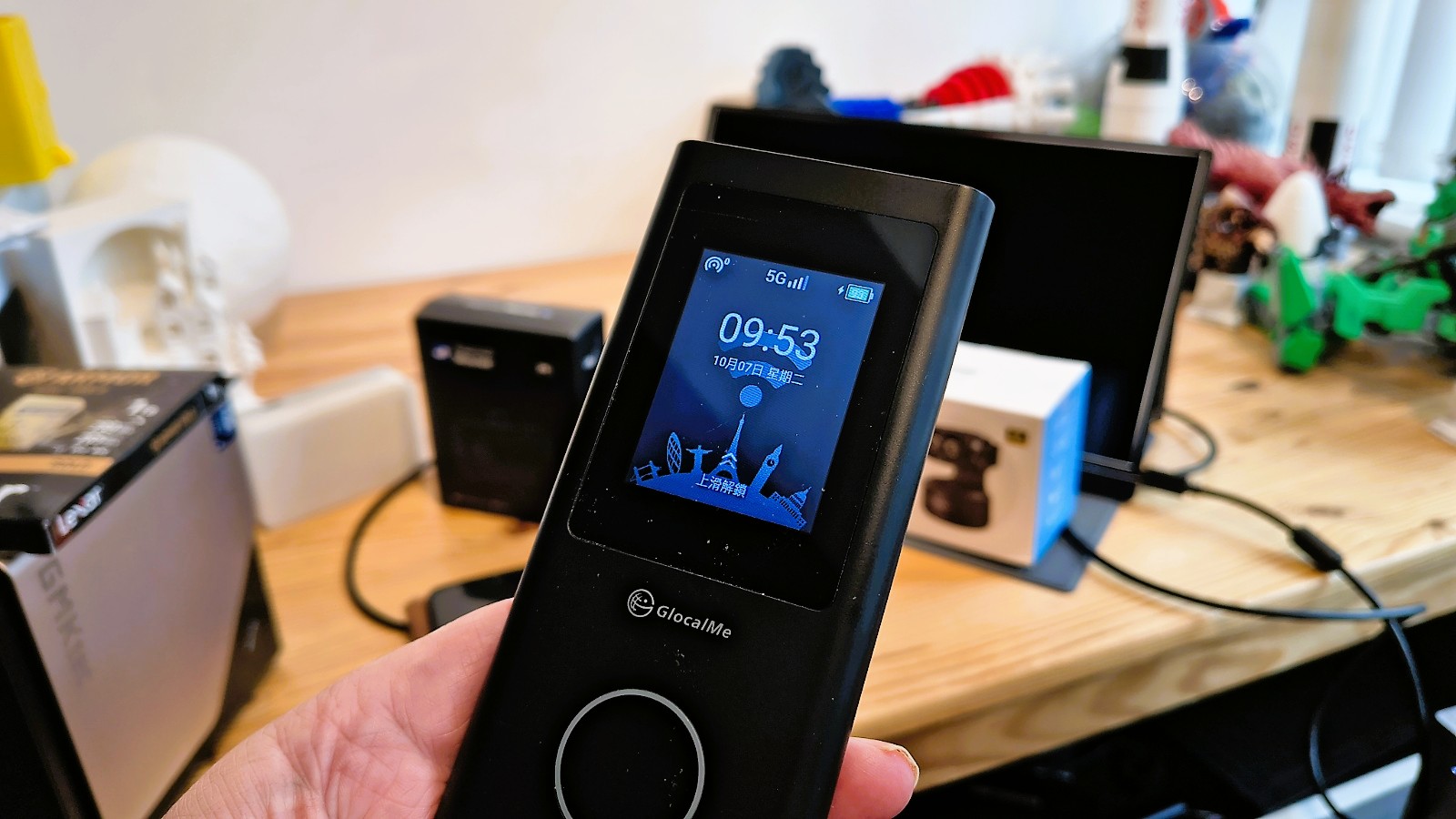
GlocalMe Numen Air: Price and availability
- How much does it cost? $240/£224/€256
- When is it out? It is available now
- Where can you get it? You can get it directly from GlocalMe and also from online retailers like Amazon.
Direct from GlocalMe, the Air costs $299.99, but that doesn’t include shipping. From Amazon.com, it's much cheaper at $239. In the UK, the direct cost is £223.99, but a shipping charge must be added to that number. Alternatively, it can be purchased from Amazon for £239.99 with free delivery on Prime.
I can’t confirm that this is an exclusive offer, but direct purchases come with a 90-day Global 1GB data package worth an additional $29.
The only option other than the device only is to buy it with a travel case, and that bumps the price up by about $17. And, as with all these types of devices, direct buyers get the option to get accidental protection for up to three years for $44.99.
Sign up to the TechRadar Pro newsletter to get all the top news, opinion, features and guidance your business needs to succeed!
European customers should be wary of accident protection, since they get legislated protection against failure for two years in law. Which is why AppleCare isn’t as popular in Europe as it is in the USA.
The cost of the data packages is segmented for specific regions. Therefore, a package exclusively for USA use that lasts 15 days costs £16.75 ($22.50) for a UK customer, but the same 3G in Japan is only £7.44 ($10). There are Global packages that will work anywhere, with 15GB of data available for 90 days, costing a whopping £110.93 ($149).
The most expensive option is a 100GB year-long package covering 13 countries that costs $699.
These prices might seem reasonable to Americans, but to Europeans, they’re incredibly high. For example, a SIM-only deal with GiffGaff in the UK covering the EU (and a few selected destinations adjacent to the EU), with 25GB of data (5GB in the EU) on an 18-month contract, would cost just £10 per month. That’s 450GB over 18 months for £180.
However, this service isn’t the most affordable. Lebara offers a monthly rolling deal for under £4, covering 50 countries with a minimum of 5GB of data.
When you factor in how much data the sixteen people who could use the Numen Air might use, and if they do not use it, that purchase vaporises after a set amount of time, this is one of the more expensive ways to access global data.
The obvious alternative to the Numen Air is the Netgear Nighthawk M3, a 5G Mobile Router with Wi-Fi 6 and the ability to use a Nano SIM from any service you wish. While it costs a little more, it is £369.99 in the UK and $397.49 in the USA. But the extra cost could easily be offset if you travel often and like to use large amounts of data.
For those on a budget, Netgear offers a 4G LTE Broadband Modem (LM1200) for only $40, which performs the same function but lacks 5G connectivity.
And, the Rolls-Royce choice is the Netgear Nighthawk M7 Pro, which costs $900, but supports 5G mmWave with a transfer speed of 8Gbps and Wi-Fi 6E connectivity.
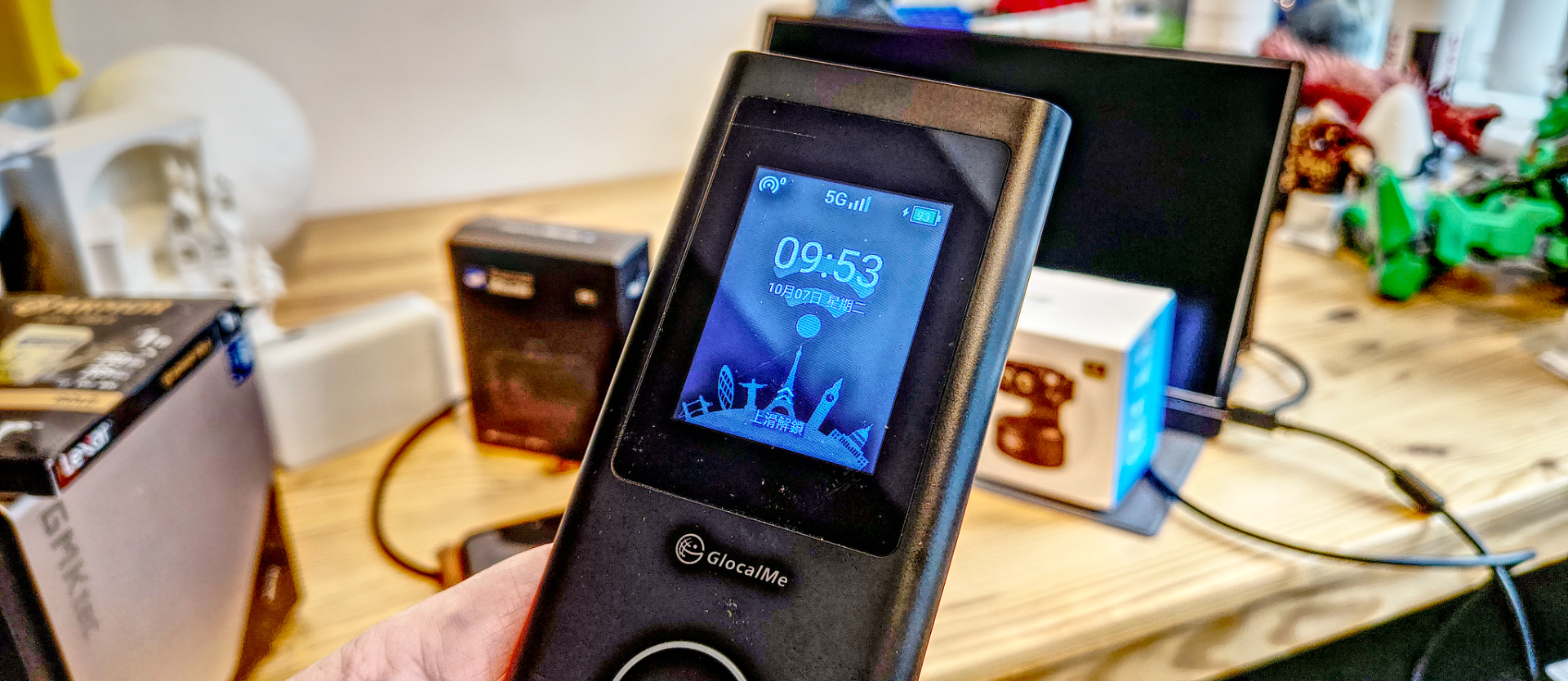
- Value score: 3/5
GlocalMe Numen Air: Specs
Feature | Details |
|---|---|
Network Support | 5G NR / 4G LTE / 3G (Global bands) |
SIM Type | CloudSIM + 1x Nano SIM slot |
Wi-Fi Standard | Dual-band 2.4GHz & 5GHz (802.11 a/b/g/n/ac) |
Max Connected Devices | Up to 16 |
Display | 2.4-inch colour touchscreen |
Battery Capacity | 5400mAh (up to 11 hours usage) |
Charging Port | USB-C (supports power bank functionality) |
Dimensions | 136 × 72 × 16.5 mm |
Weight | 190g |
Security | WPA/WPA2, password protection |
Operating System | Proprietary GlocalMe OS |
App Support | GlocalMe app (iOS/Android) for data and device control |
Roaming | No roaming fees with CloudSIM |
Coverage | 200+ countries supported |
Additional Features | Real-time data usage display, signal strength monitor |
GlocalMe Numen Air: Design
- A phone reskinned
- Small screen
- Average battery
My initial reaction to the Numen Air, or as its documentation calls it, disturbingly, the Numen Air HyperConn, is that this is a phone without a proper screen or buttons.
It bears a passing resemblance to the old Apple iPods with their dial controls, and it's almost entirely devoid of any surface features other than the tiny 2.4-inch screen, a circular control dial, a USB-C port for charging, and a Nano SIM card slot.
The screen is touch-sensitive, which could have made the dial redundant, but didn’t.
When I get to the user experience, I’ll talk about the screen, but a mild spoiler is that it's too small to be used in this way by an adult.
That it’s the size of an actual phone is probably more to do with the battery capacity, but it might utilise off-the-shelf phone electronics, since what it's required to do is provide exactly the same as a typical smartphone, but distribute it over Wi-Fi.
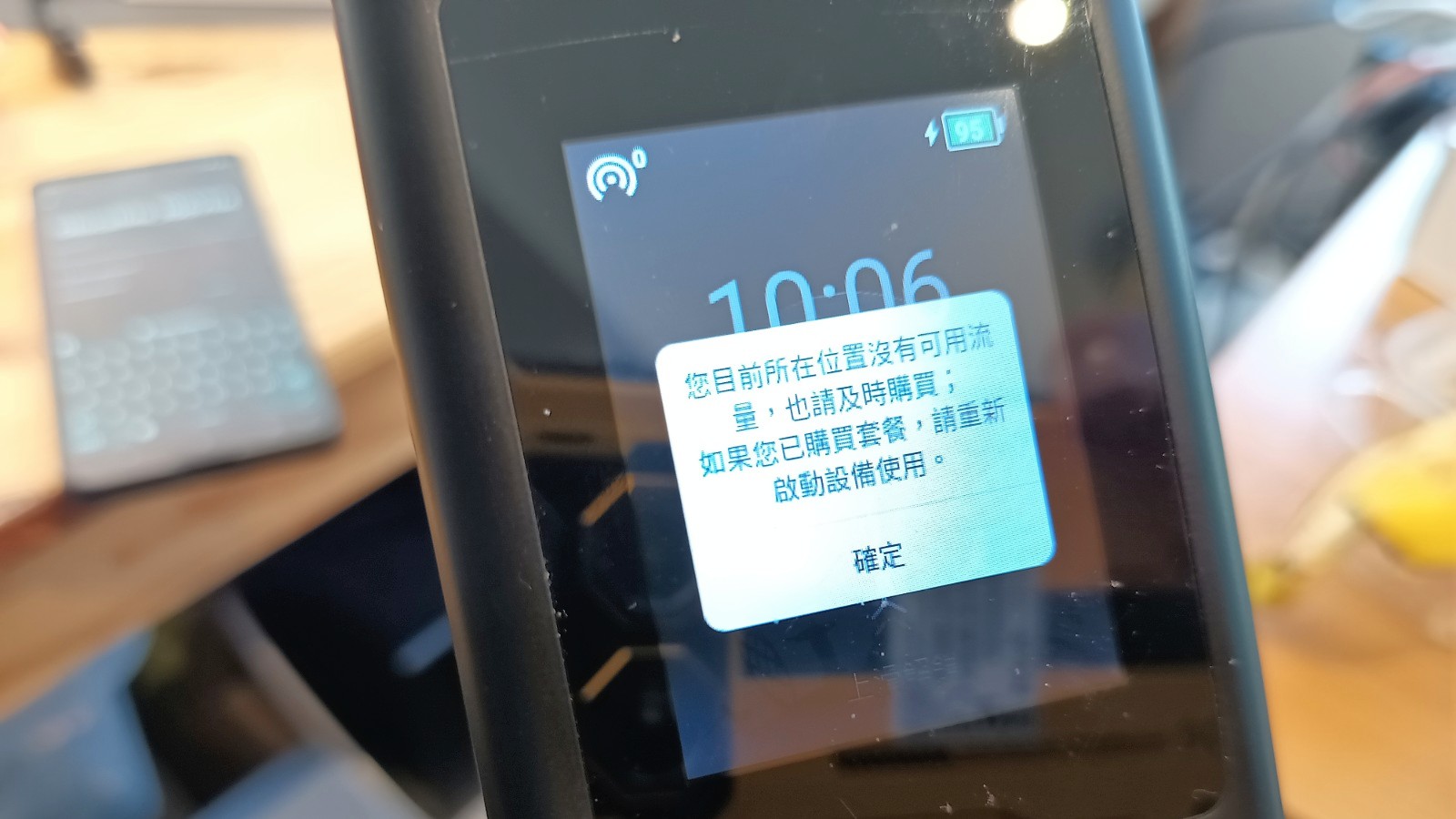
The battery capacity is 5,400mAh, a typical amount for a modern phone, and according to GlocalMe, it provides 11 hours of usage for up to 16 devices.
For the same money, you could buy a rugged phone that would have three times that battery capacity and would work as a phone.
It’s interesting to note that most makers of mobile hot spots tend towards a more puck arrangement than emulating a phone, as perhaps they’ve decided to avoid reminding people that the same job could be done with a less expensive device, or even an old, discarded phone.
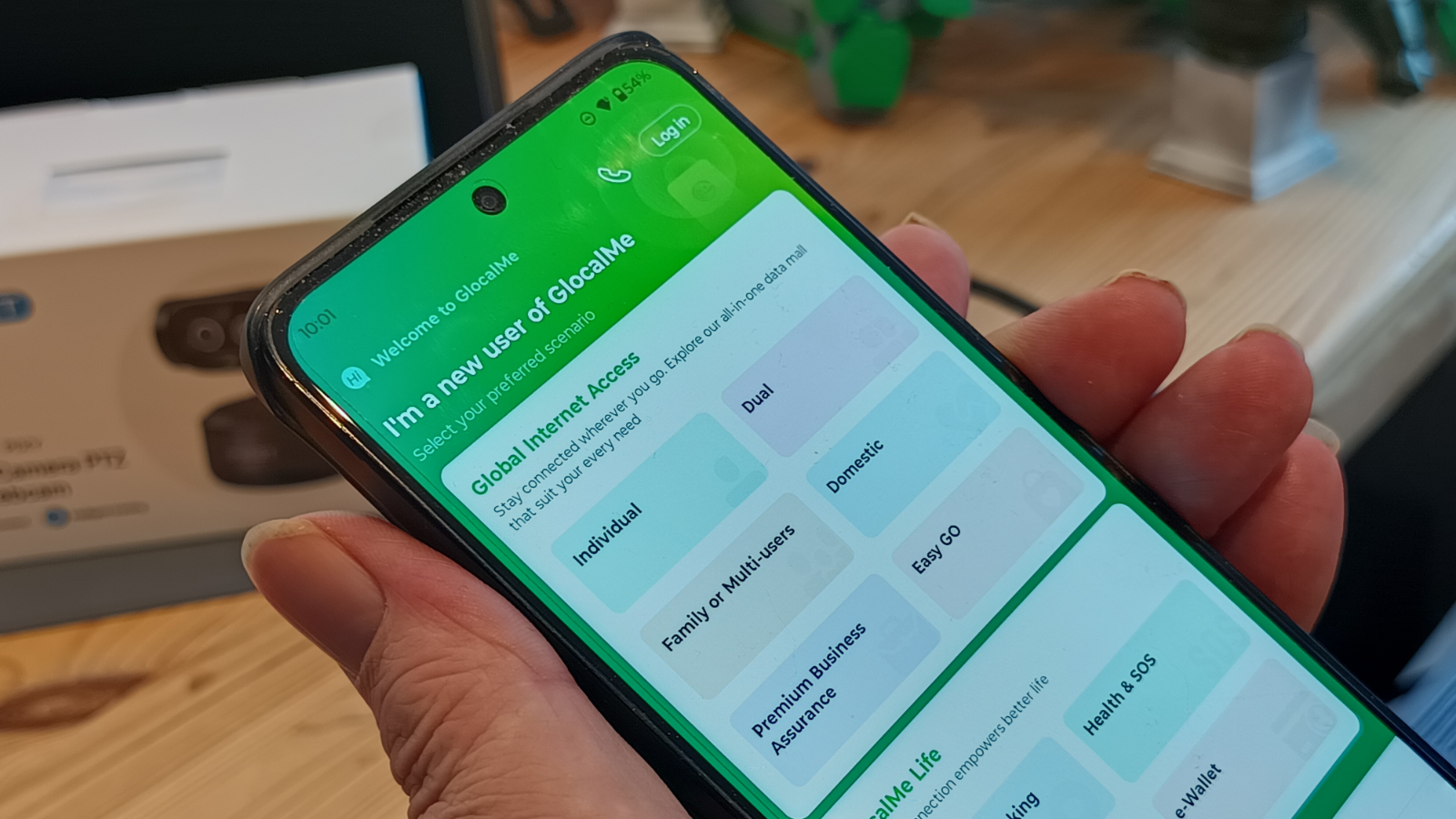
Design score: 3/5
GlocalMe Numen Air: In use
- Defaults to Chinese
- Tiny inputs
- Quick recharge
The first fun I had with this device was that it defaults to Chinese, which is not my native language or one I typically converse.
The only way I navigated around this showstopper was by using the online manual, which showed what each menu screen should look like in English. Using this and the icons that GlocalMe had chosen, I was able to find the Language selection page and change to English.
To configure this to use the eSIM functionality, you must install a mobile phone app and then use it to scan the barcode on the back of the Numen Air, registering with the GlocalMe service using a Google account or email.
With the app connected, the next hurdle is to arrange a payment plan, as this unit will not automatically distribute a Wi-Fi connection, even if you have configured one to upgrade to the latest firmware.
And, on that subject, let's talk about that screen, which is easily the worst part of this device.
Because when setting up a Wi-Fi connection, you are required to enter your local password.
Achieving this without multiple tries on a screen that is only 36 mm across, and with one’s index finger exactly half that width, is a genuine challenge and slightly ridiculous.
It took me three attempts, as each letter on the keyboard was only 1.5mm wide.
For a short while, maybe thirty seconds, I did consider paying the 3.99 Euros that would get me 1GB of data in the UK for a whole day. But sanity took over, and I used a GiffGaff SIM I keep precisely for testing these types of devices. And, no, I didn’t get any free data package with my review hardware.
And it was relatively easy to access the SIM card services and select the SIM over the Cloud SIM option. That worked as anticipated, and I was able to use the Numen Air to access the 4G network like it was Wi-Fi connected broadband. I didn’t use the 5G, because I live in a location where, for whatever reason, that doesn’t work, even though it's not especially rural.
Once configured, there is another useful feature of this device: it can be used with a computer that doesn’t have Wi-Fi by connecting it using the provided USB-C to USB-A cable.
You are warned that activating this function on the Numen Air is only compatible with Windows PCs, which may be disappointing for those with Apple hardware or Chromebooks. But at least the latter can still use the Wi-Fi functionality.
While 11 hours (15 hours with 4G connection) doesn’t seem like a long time for someone using this device throughout a day, I did discover that the Numen Air does recharge reasonably quickly, even if no power supply is provided in the box.

Normally, I’d have included a performance section, but there are just too many variables to pass on relevant information. When you combine the variability of 4G or 5G, and then the vagaries of Wi-Fi connections, any semblance of realistic performance results goes out of the window.
What I will say is that while 5G in this configuration might have a theoretical limit of 2.5Gbits, the Wi-Fi connections over Wi-Fi 5 with dual-band 2.4 and 5GHz don’t add up to 2.5Gbits. So not one single connected device could use that amount, even if it wanted to. 2.4GHz has a maximum of 600 Mbps, and 5GHz has about 1300 Mbps, theoretically.
- In Use: 3.5/5
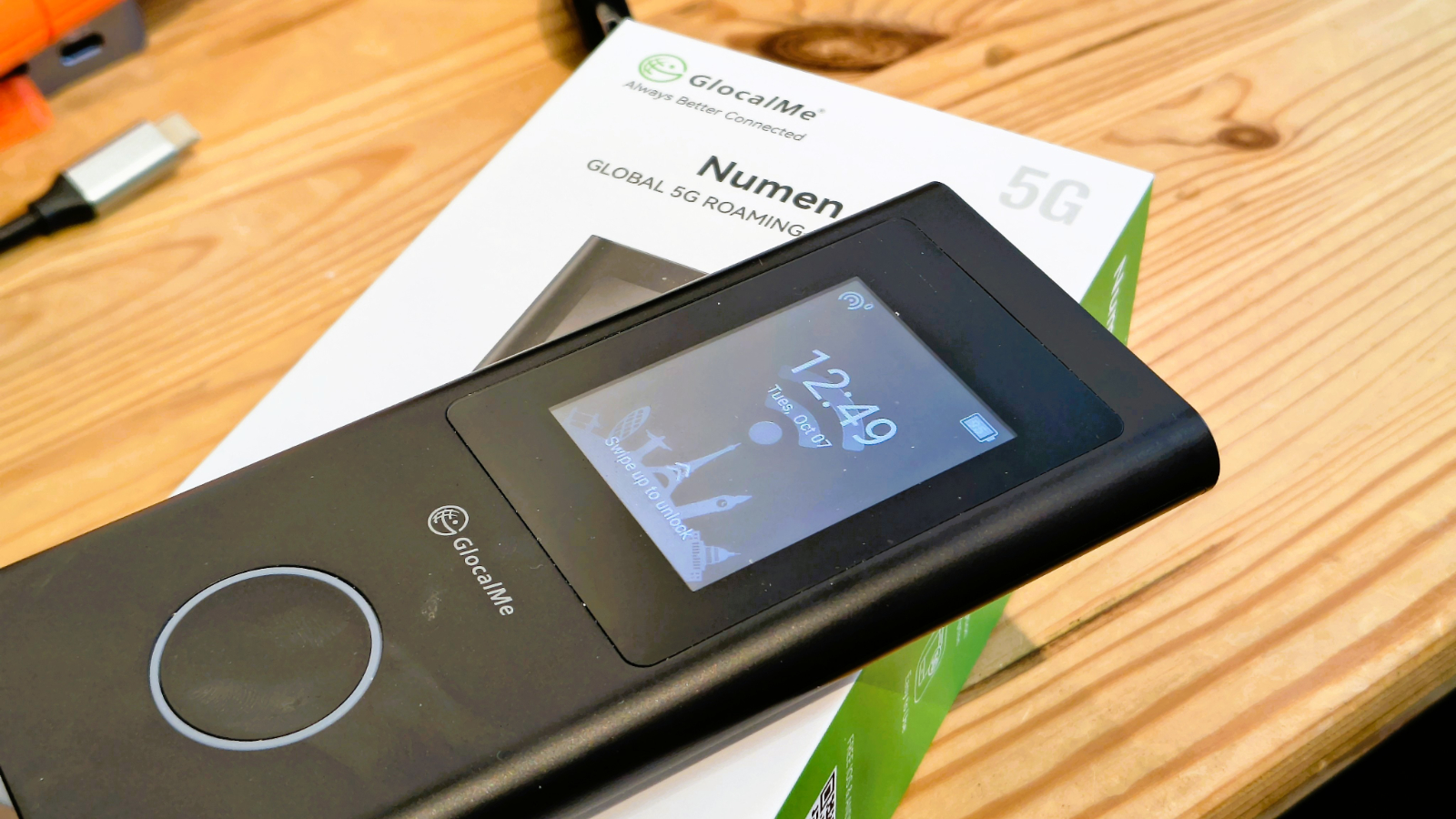
GlocalMe Numen Air: Final verdict
While smartphones can easily double as mobile hotspots, the GlocalMe Numen Air offers a more refined and purpose-built solution for frequent travellers and remote workers. Unlike a phone, which can quickly drain its battery and throttle hotspot performance under load, the Numen Air is designed to handle sustained multi-device connectivity without compromise.
Its 5400mAh battery not only lasts longer but also doubles as a power bank - a thoughtful touch for those on the move. The CloudSIM technology is another standout, allowing seamless international connectivity without the hassle of swapping SIM cards or incurring roaming charges. In contrast, smartphone tethering often requires manual configuration and can be subject to carrier restrictions or hidden fees.
That said, the Numen Air isn’t without limitations. It lacks the versatility of a smartphone, offering no app ecosystem, camera, or advanced network controls. And while it supports up to 16 devices, it doesn’t offer Wi-Fi 6, which would future-proof its performance.
With even inexpensive phones now offering 5G and eSIMs, it wouldn’t take much to deliver a similar experience at a lower initial outlay and with considerably cheaper data plans.
Still, for users who need reliable, global connectivity across multiple devices, especially in professional settings, the Numen Air 5G is a compelling alternative to relying solely on a phone. It’s not just a travel companion; it’s a connectivity tool built with purpose.
Should I buy a GlocalMe KeyTracker?
Attributes | Notes | Rating |
|---|---|---|
Value | Not a cheap device and expensive data packages | 3/5 |
Design | Simple design but hardly compact | 3/5 |
In Use | Relatively easy to use once in the correct language | 3.5/5 |
Overall | An elegant design but an expensive option | 3.5/5 |
Buy it if...
You don’t like SIMs
The beauty of this device is that you can roam the globe without needing to procure a SIM in each country and the contract that goes with that. However, you can get Global SIMs that provide the same functionality for less than GlobalMe charges.
Don't buy it if...
You are on a tight budget
As global data services go, this is definitely the expensive option, especially in those locations where mobile phone services have limited competition. You can use it with bought SIMs, but this appears to contradict the purpose.
You want the best speeds
Without Wi-Fi 6 or 7 and with only access to the slower 5G services, there are similar devices that can offer higher throughput to your devices.
For more connectivity hardware, we've reviewed the best mesh Wi-Fi systems and the best Wi-Fi routers.
Mark is an expert on 3D printers, drones and phones. He also covers storage, including SSDs, NAS drives and portable hard drives. He started writing in 1986 and has contributed to MicroMart, PC Format, 3D World, among others.
You must confirm your public display name before commenting
Please logout and then login again, you will then be prompted to enter your display name.
